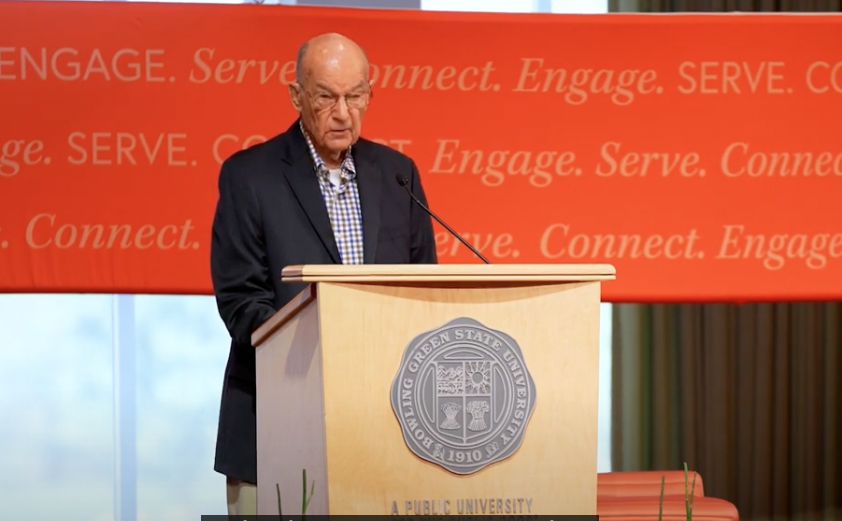Emily Siegel never expected to wake up in the morning to a friend telling her he was contemplating suicide.
Siegel, a senior at the University and board member of the northwest Ohio chapter of the American Foundation for Suicide Prevention, knew what to do and was able to help her friend.
“It’s not easy to see someone you care about go through something like that and know it may not turn out like a Cinderella story where you save their life,” Siegel said.
Suicide is the third leading cause of death in people ages 15 to 24 years old, according to the Centers for Disease Control and Prevention.
Siegel helped her friend, but some people may not know what to do in a similar situation.
“We don’t talk about [suicide] much, and when we do we don’t know how to,” said Lisa Hanasono, associate professor of communication.
There are some warning signs of suicide students can look out for, Hanasono said.
Preoccupation with death and hopelessness could be warning signs of suicide, she said. Sometimes it’s a cry for help, but other times it’s more and the person may have a plan, she said.
Siegel said she noticed a feeling of hopelessness in her friend.
“He said he’d been depressed, that he had no reason to live, that no one cared about him,” Siegel said.
Siegel’s friend expressed his feelings to her on the phone, but some people may express these feelings through social media.
Posting a status or sending a tweet may be a way for a person having these thoughts “to cope and feel like they’re not alone and not saying it to just one person,” Hanasono said.
“There’s the potential to get messages of support and advice,” Hanasono said.
It may be hard to tell if the thoughts and feelings expressed through social media are genuine.
“When you see someone posting things like that you don’t know if they may actually be serious,” said Montana Miller, associate professor of popular culture. “You can’t really draw conclusions.”
If students see a post that may suggest suicide or depression, Miller suggested students respond by sending the person a private message letting the person know they care.
While warning signs helped Siegel identify that her friend was contemplating suicide, Craig Vickio, a clinical psychologist at the University Counseling Center, said seeing warning signs doesn’t always mean there’s a problem.
“If you’re unsure of a problem, air on the side of caution and take action to respond,” Vickio said.
One way to respond is to approach the person, Vickio said.
“Be honest about your concerns and avoid jumping to conclusions about what their behavior suggests, avoid labeling,” Vickio said. “It’s better to point out specific observable behavior.”
Some people may think that asking someone if they are planning to die by suicide may plant the idea in the person’s head, but Vickio said this is a myth.
“It’s good to come right out and ask if there’s any question at all about their safety,” Vickio said.
Siegel did this with her friend, and then asked if he had a plan to die by suicide, the things he needed to do it and where he was. Siegel was also willing to just listen, she said.
“All that day we had constant contact,” she said. “I tried to make him understand that no matter what he told me, I wasn’t going to judge him. Everybody’s life is different.”
Vickio said it’s important to listen to the person.
“Sometimes we think helping means an answer,” Vickio said. “[The person] really needs someone who really cares and is taking time to listen.”
Lara Martin Lengel, a professor in the department of communication, said it’s important to “explicitly indicate to that person that you will provide support at any time of the day or night.”
“Let people know they’re not alone in feeling as badly as they do,” Lengel said.
Siegel listened, gathered information and then called the police department for the town he was located in.
Calling the police wasn’t an easy decision, and it was something Siegel struggled with.
Some students may find it hard to call the police or take other action because of the fear that the friend they are trying to help will be upset with them for it.
Siegel’s friend was upset and angry with her at first, but he realized later that she was trying to help him.
“He straight up told me that I saved his life that day,” she said. “At the end of the day I had to realize that I would rather him hate me and get the help he needed to live another day. I would rather him live than know he died and I did nothing to help him.”





















